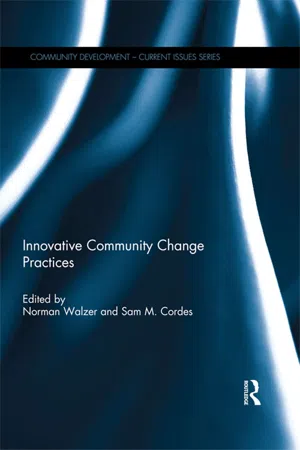
- 138 pages
- English
- ePUB (mobile friendly)
- Available on iOS & Android
Innovative Community Change Practices
About This Book
The national recession forced many communities to examine new and innovative ways to promote local economic development, resulting in long-term community changes. New techniques and approaches were used to identify available opportunities and programs which could take advantage of development opportunities. A common theme among the contributions to this book is a focus on building leadership capacity, and several chapters discuss the successful practices which are aimed at bringing new leaders into local development efforts. Especially important are ways to identify youth and young adults, and designing programs that bring them into active leadership roles within community development efforts. On a broader scale, several authors present material regarding building local entrepreneurship capacity, and recognizing that entrepreneurs at different stages in their development have different training and support needs.
The discussions in this book will help local policymakers and development practitioners better understand the various development techniques, and find ways to build capacity within their community, stimulating development. This information will be especially useful for groups interested in engaging youth and populations who, in the past, have not been especially active in discussions about community and economic development. This book was originally published as a special issue of Community Development.
Frequently asked questions
Information
Overview of innovative community change programs
Table of contents
- Cover
- Half Title
- Series Page
- Title
- Copyright
- Contents
- Citation Information
- Notes on Contributors
- 1. Overview of innovative community change programs
- 2. InCommons: supporting community-based leadership
- 3. Community leadership development education: promoting civic engagement through human and social capital
- 4. Evaluating an asset-based effort to attract and retain young people
- 5. Engaging youth in community change: three key implementation principles
- 6. Engaging the underserved in community leadership development: Step Up to Leadership graduates in northwest Missouri tell their stories
- 7. Can leadership development act as a rural poverty alleviation strategy?
- 8. Lessons from the field: mapping Saskatchewan’s Pipeline of Entrepreneurs and Enterprises in order to build a provincial operating system for entrepreneurship
- Index